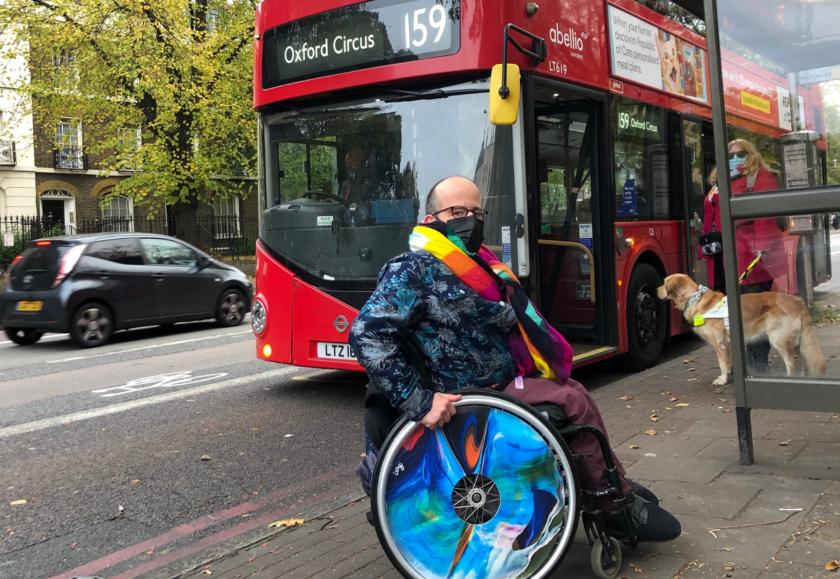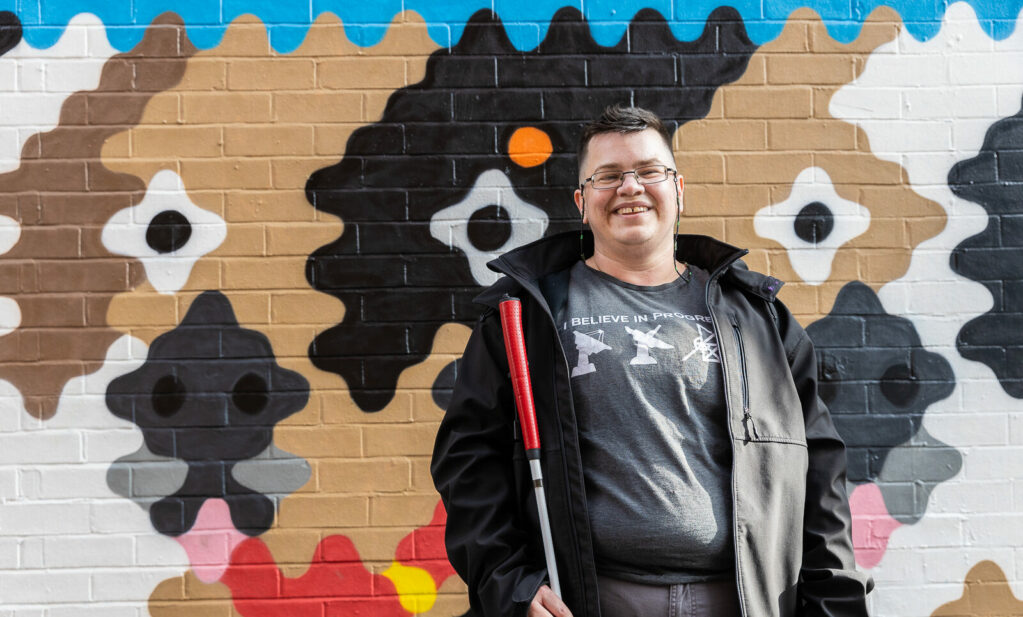Cutting London’s Buses would be a disaster for disabled people
Transport for All
Our response to Transport for London's consultation on cutting and reducing bus services. We explain why we strongly oppose the plans and what the impact will be on 1.2 million disabled Londoners.

Transport for London (TfL) is currently seeking views on their proposals to cut and reduce bus services across London. We explain why at Transport for All we oppose these plans, what the impact will be on the 1.2 million Deaf and disabled people in London, and how you can have your voice heard.
The importance of the bus
Buses play an integral role in disabled Londoners’ transport lives. With only 25% of mainline rail stations, and only 91 out of 270 Tube stations, having step-free access, buses are often the most accessible mode for many disabled people and certainly the most step-free option. Around two thirds of disabled Londoners have no household access to a car, so it’s no surprise that buses are the second most used form of transport for disabled Londoners after walking and wheeling. All 9000 of London’s bus vehicles are low-floor and are fitted with automatic ramps, hearing loops and other accessibility features. And the Freedom Pass provides free travel to many disabled people, addressing the financial barrier to travel.
Transport for London’s proposals are extensive and far-reaching, with changes proposed to almost 100 routes, including plans to withdraw 16 routes altogether. These cuts and reductions will hit disabled people the hardest.
Today we have submitted our response to the Central London Bus Review, and we are urging our members to do the same. Click here to go to TfL’s website to respond to the consultation.
The deadline for responding is Sunday 7th August at midnight.
You can download our full response using the links below, or continue reading for a summary of our main concerns.
Our response: PDF
Our response: Word
Our concerns: the impact on disabled people
- Overcrowding
- Changing buses
- Interchanges at different stops
- Personal security
- Change is itself a barrier
- Compounding impact of other changes
1. Overcrowding
Reducing frequency of buses could lead to overcrowding at both stops and on board the bus. It would mean an increased likelihood of the one wheelchair priority space per vehicle being occupied, either legitimately by another disabled person or by another passenger with luggage or a buggy, putting the disabled passenger into a position of conflict. A more crowded service also presents a barrier to blind and visually impaired people, or those who are less steady on their feet – the more packed the service, the more pushing and jostling there is which can lead to falls. Chronically ill people or those who are immuno-compromised will also be deterred from boarding crowded buses for risk of virus transmission. For neurodivergent people, crowded services can add to sensory overload and anxiety.
2. Changing buses
Currently, around 19% of bus journeys made on central London bus routes involve a change of bus. Under these proposals, this is expected to increase to 24%. For disabled passengers, getting on and off the bus is the most critical part of the journey, and is fraught with barriers and opportunities for things to go wrong (e.g. the ramp breaking, bus driver refusing to stop, audio/visual announcements not working). Increasing the number of bus changes a disabled person has to make along their journey will increase the likelihood and frequency of these issues.
3. Interchanges at different stops
These proposals will also result in 88 new bus interchanges that involve moving between stops. For blind and visually impaired passengers, as well as some of those with cognitive impairments, identifying and finding a bus stop is extremely difficult, and having to do this again half way through your journey will be a deterrent. Changing bus stops may also require crossing the road, another barrier for disabled people especially more at-risk pedestrians (including blind people and those living with Dementia). For people with mobility impairments who use mobility aids or find walking more difficult, issues with inaccessible streetspace (uneven/bumpy pavements, street clutter, tree roots, missing dropped kerbs or tactile paving, cobbles, etc) will make these interchanges impossible. The interchanges included within the proposals range from crossing the road to making a journey of 600 meters, which is simply not an option for many.
4. Personal security
The frequency of bus services at night has a profound effect on how safe passengers feel. Passengers do not want to wait at bus stops for extended periods of time when it is dark and there are fewer people around. This is especially true for disabled people, and even more so for disabled women, disabled LGBTQ+ people, and disabled people of colour who face intersectional prejudice and increased occurrence of hate crime. These issues are exacerbated by the lack of alternative options. The Night Tube is in many instances not accessible to disabled people (for example, when there is no step free access). Disabled people have many issues with using Taxis and Private Hire Vehicles (and this is an expensive and unaffordable option for many). The bus is often the only way to get home.
5. Change in itself is a barrier
Throughout our work and the insights we have from our members, we know that change itself can pose additional barriers. Disabled people are masterful at adapting and innovating and are proficient at navigating barriers. Many often build up ‘mental maps’ of the most accessible routes for them. Blind and visually impaired people memorise routes, and those working with Assistance Dogs undergo extensive training to familiarise the dog with their usual routes. For people with cognitive impairments and learning disabilities, it can take a long time to learn how to use a particular bus route and to build up the confidence to use it. Sudden and drastic changes to these routes will have a profound impact on so many who will feel back at square 1 and needing to learn, train, and build confidence all again. This will be felt strongly among disabled people whose confidence in public transport post-pandemic has returned slowly.
6. Compounding impact of other changes
We are seriously concerned that these proposals are the latest in a long series of changes that have deepened inequalities and created further barriers for disabled people. Disabled people, who have been disproportionally impacted by COVID-19 – accounting for 60% of all COVID deaths and being among the hardest hit by impacts of lockdown and shielding, are now weathering the cost of living crisis.
In London, existing inequalities in transport are set to worsen. If the proposed cuts to bus services, as set out in the live Central London Bus Review, go ahead, many disabled people will find the bus difficult or impossible to use (one of the only accessible options available for many). Future Step Free tube works have been scrapped, the 60+ Oyster Card is being phased out, and there are ongoing issues with Dial-A-Ride and TaxiCard. Additionally, the proposed ULEZ expansion could impact upon some disabled people if not mitigated effectively through scrappage schemes and a robust reimbursement scheme. We do not believe any one of these issues is being mitigated effectively, nor their compounding effects.
How to have your voice heard
Contact Transport for London (TfL) for more information about the changes and to repond to the consultation.
Click here to visit the consultation website.
If you cannot complete the survey online, you can submit your response by email or in writing (no stamp needed) to:
- Haveyoursay@tfl.gov.uk(External link); or
- FREEPOST TFL HAVE YOUR SAY (CLBR)
You can also telephone Transport for London on 020 3054 6037.

